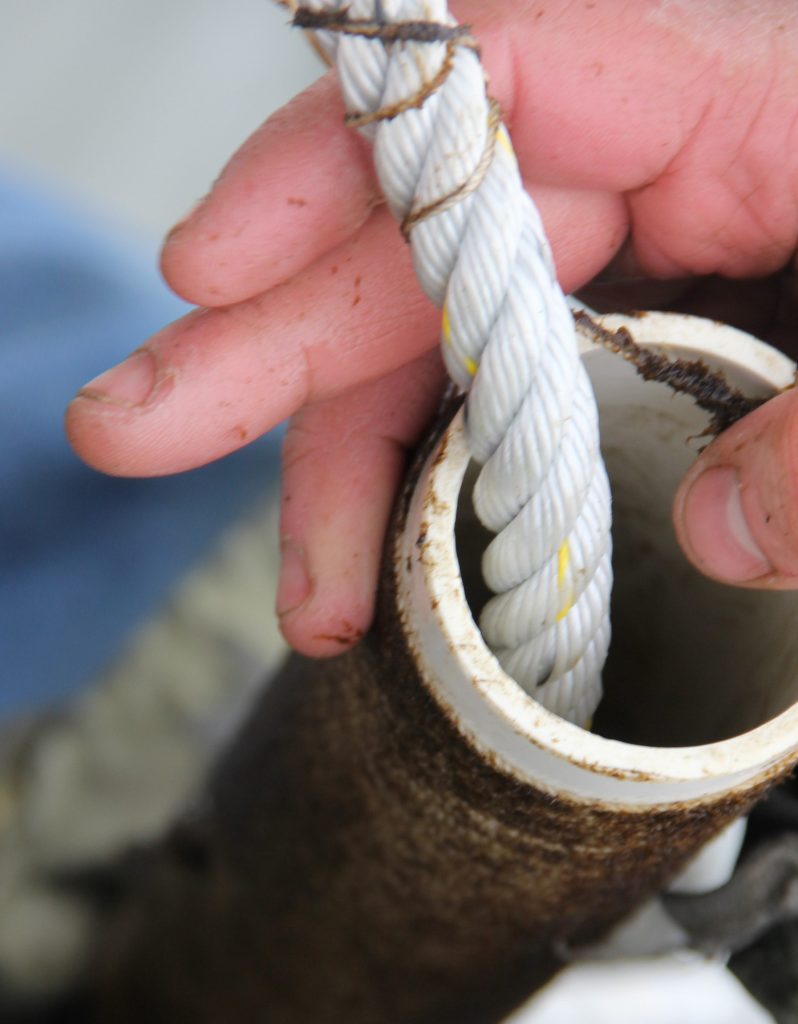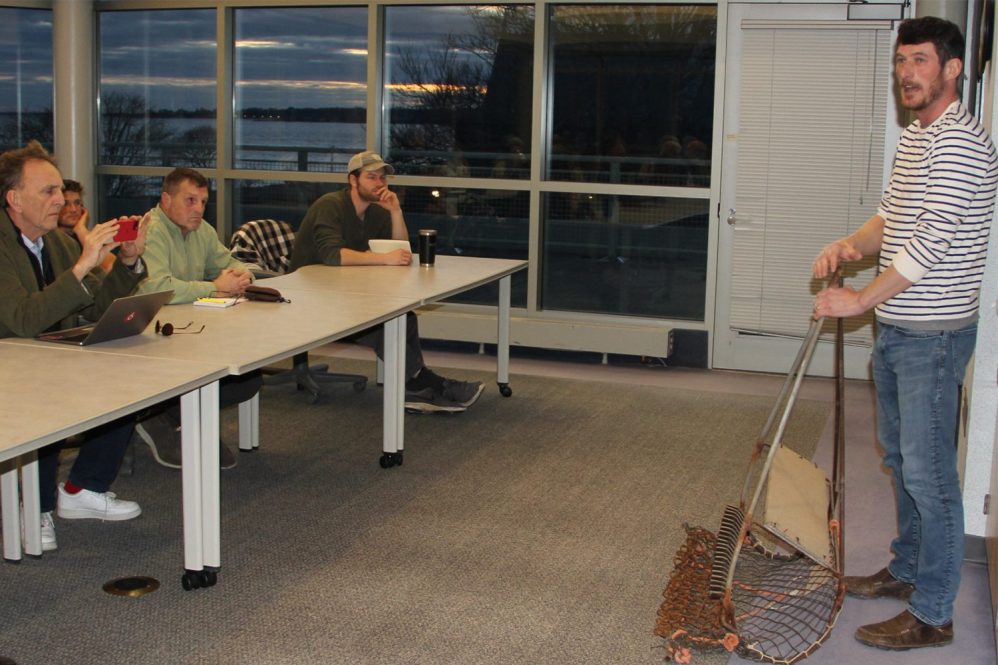Two federal grants totaling almost $600,000 will help launch two new initiatives considered crucial to the long-term viability of the state’s aquaculture industry.
The National Oceanic and Atmospheric Administration’s Sea Grant program will provide a $398,896 grant to Connecticut Sea Grant for a two-year project to assess workforce development needs. The grant was one of 10 projects nationwide announced Aug. 15 by National Sea Grant that together will receive a total of $3.3 million for seafood industry workforce support.
A second grant of $200,000 from the U.S. Department of Agriculture’s Agriculture Research Service will fund the purchase and outfitting of a trailer to be used as a mobile lab for solving production-related challenges of the emerging kelp aquaculture industry. The trailer will also be used to provide training to seaweed farmers and other interested sectors.
“I am grateful that our staff remains in close contact with the aquaculture industry to understand and address ongoing challenges and have the academic skills to secure funding from such competitive programs,” says Sylvain De Guise, director of Connecticut Sea Grant and a professor in the UConn Department of Pathobiology and Veterinary Science.
Tessa Getchis, CT Sea Grant aquaculture extension specialist and UConn Extension senior extension educator, says the funding will be used to ensure the state has a workforce with the right skills and training for its current and future aquaculture sector.
“We want to align what’s being taught with the needs of industry, and fill in the gaps,” Getchis says. “We’re going to look at the whole spectrum, from high schools, trade schools, to community colleges and universities, as well as training offered through UConn Extension, non-profit organizations and tribal nations.”
Multiple partners are involved in the project, including the state agriculture and education departments, representatives of traditional and agricultural science and technology high schools, as well as UConn, Southern Connecticut State University, and Manchester Community College. Pisces Learning Innovations, a private economic and development consultancy firm, will be hired to conduct an analysis including interviews and surveys of educators and industry members that would identify the specific skills and subject matter areas that should be taught.

The information generated through the project would be used to guide a multi-pronged approach to establishing a cohesive educational foundation for aquaculture in Connecticut, where students can obtain the skills they need for jobs at all levels in shellfish, aquaponics, kelp, finfish and ornamentals aquaculture, including in related science, policy, business and management fields.
Alysa Mullen, fish lab director and aquaculture educator of the Sound School in New Haven, noted that data show that the majority of students who graduate from high school aquaculture programs leave the state for secondary education and do not return.
“There are several high schools like the Sound School in Connecticut teaching aquaculture in a hands-on setting, but no post-secondary education programs,” she says. “We are losing the students to states like Rhode Island and Maine that have these opportunities for students after graduation.”
Anoushka Concepcion, CT Sea Grant and UConn Extension associate extension educator, is leading the project to create a mobile seaweed lab, in partnership with a Maine-based company, Spartan Sea Farms, and the state Department of Agriculture Bureau of Aquaculture. The grant, she says, will fund the purchase and outfitting of an 8-by-8-by-14-foot trailer into a lab that could travel to locations in Connecticut, New York, and possibly Rhode Island to provide training to seaweed farmers. The funds will also support the salary of a technician to run the facility.
Initially, she says, the lab will be used to investigate methods seaweed farmers could use to produce the seeded string needed to start a kelp crop. De Guise will oversee the investigations. Farmers in Southern New England have been struggling to obtain seeded string in recent years due to unreliable supply, Concepcion noted. By teaching farmers how to produce their own seeded string from the reproductive tissue of kelp grown on their own underwater lines, reliance on wild sources will be reduced and harvest volume would increase.
“We want to use the lab for many different production-related challenges,” she says. “But the first project will be to address the lack of access to kelp seed in Long Island Sound.”
The grant funds will also pay for the creation of a publicly accessible manual and video about kelp nursery set-up and operations for small-scale farms.
Approximately four farms have been consistently growing kelp over the last seven years in Long Island Sound, a number that would likely be much higher if seeded string were readily available, she says. Both active farmers and those who would like to start farms have repeatedly asked for help solving the seeded string deficiency.
“This mobile seaweed lab is a significant step because it will provide the infrastructure where the emerging needs of various sectors can be immediately addressed through applied research and training opportunities,” Concepcion says.
CT Sea Grant Associate Director Nancy Balcom says the two projects demonstrate how Sea Grant directly responds to identified needs.
“We look at who is being affected, who needs to be at the table in order to help solve the problem, and what resources are required,” Balcom says. “By securing those resources and facilitating that involvement, we help ensure that collective action leads to shared benefits.”



